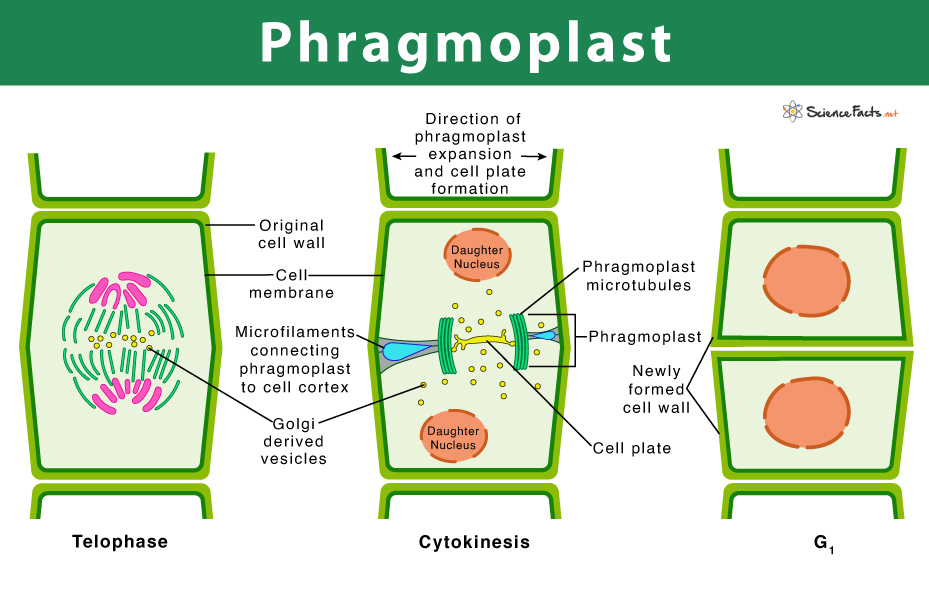Phragmoplast
What is Phragmoplast
Phragmoplast is a specialized cylindrical structure that only forms during the late cytokinesis of plant cells. It helps to separate two daughter cells by forming a new cell wall.
The land plants belonging to the streptophyte lineage and some species of the green algae, such as Coleochaetales, Charales, and Zygnematales, undergo phragmoplast-mediated cell division. This type of cell division is generally not found in the other green plant lineage, like the chlorophyte algae.
Structure
This plant-specific structure, phragmoplast, is a complex collection of microtubules (MTs), microfilaments (MFs) or actin filaments, and endoplasmic reticulum (ER). All these components assemble in two opposing arrays perpendicular to the future cell plate during anaphase and telophase, with their plus (+) ends facing the plane of division.
It initially has a barrel shape and forms from the mitotic spindle between the two daughter nuclei while nuclear envelopes reassemble.
Initially, the cell plate forms like a disc between the two halves of the phragmoplast. As more material gets added to the edges of the growing cell plate, the phragmoplast microtubules start to disappear in the center and regenerate at the edges. This outward growth continues till the outer wall of the dividing cell is reached.
Suppose a phragmosome is present in the cell. In that case, the phragmoplast and cell plate grow through the space occupied by it and reach the parent cell wall precisely at the position formerly occupied by the preprophase band.
Function in Plant Cell Cycle
The phragmoplast mainly acts as a framework for cell plate assembly, forming the future cell wall, separating the two newly formed daughter cells.
Due to their rigid cell walls, plant cells cannot form furrows or cleavages like animal cells. Instead, they form a cell plate across the equatorial plane of the cell, separating the two daughter cells.
During the end of karyokinesis, i.e., telophase, the phragmoplast emerges from the remnant spindle microtubules between the daughter nuclei. This phragmoplast carries membrane-enclosed vesicles derived from the Golgi apparatus to the equatorial region of the cell. These vesicles merge to initiate the formation of the cell plate. Once the initial cell plate forms at its center, the phragmoplast expands outward to reach the cell edges. Gradually, the growing cell plate fuses with the existing plasma membrane, producing two daughter cells, each with its plasma membrane.
-
References
Article was last reviewed on Saturday, July 24, 2021




